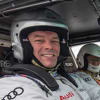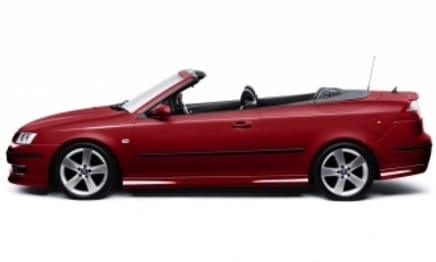
SAAB 9-3 SportCombi 2006 Review
- Saab 9-3
- Saab 9-3 2006
- Saab 9-3 Reviews
- Saab Reviews
- Saab Wagon Range
- Wagon
- Saab
- Prestige & Luxury Cars
- Family Cars

In a bid to turn around a disappointing 2005, Saab has followed its pricing re-alignment with the introduction of the 9-3 SportCombi and a sharp entry-level price tag.
Billed as a sports wagon, the SportCombi is available in two turbocharged variants: an entry-level 110kW Linear model and a 184kW 2.8-litre V6 Aero.
Saab marketing staff suggest the SUV sales boom may be levelling off, and car buyers will be looking for flexible alternatives to large, all-terrain wagons — a change they believe will benefit the small, but growing, prestige wagon market.
The new 9-3 wagon is unmistakably Saab. A stand-out feature are its high-mounted, frosted LED tail lights up the side of the rear pillar.
Love them or hate them, they stand out, and LEDs are brighter, more reliable than conventional globes.
The wagon offers a 60/40 split-fold rear seat as well as a front passenger seat back that folds flat for extra-long cargo.
There's the added versatility of a cargo net that can be deployed behind the front seats when the maximum 1273 litres of space is being used.
With the rear seats up, boot space is claimed to be 419 litres, with a "TwinFloor" storage area situated under the floor.
The $45,400 Linear's two-litre turbocharged engine is driven through the front wheels via a five-speed manual or optional automatic. A five-speeder costs an extra $2100.
Among the standard fare are electronic stability control, 16-inch alloys, cruise control, climate control, a chilled glove box and heated leather seats.
The $4000 Linear Sport pack includes parking radar, 17-inch alloys, fog lights and an electrically adjustable driver's seat.
The Saab brand is almost as synonymous with safety as its compatriot brand Volvo, and the standard safety equipment list reflects that.
There's stability control; anti-lock brakes with electronic brake force distribution; mechanical brake assist; cornering brake control; dual-stage driver and passenger airbags; front seat-mounted head/thorax airbags; roof rail airbags; active head restraints;and anti-submarining front and rear seats.
A price rise for the Aero brings a six-speed manual priced at $72,400, and the six-speed auto at $74,900 (Saab expects to sell 20 per cent automatics), but the
powerplant offers a decent spike in outputs for the money.
This Holden-built, 2.8-litre V6 turbo V6 offers peak power between 1800 and 4500rpm. Saab claims 90 per cent of peak torque is available from a low 1500rpm.
That's enough for a claimed 0-100km/h time of 6.9 seconds in the manual.
The Aero sits on a sport-tuned suspension, with 17-inch wheels as standard, with the next level of electronic stability control, ESP Plus, that allows for more "active" driving.
There's also an auto-dimming centre rear-vision mirror, electric adjustment for both front seats, a six-CD in-dash sound system and parking radar.
The Aero options list includes 18-inch wheels; both models can be optioned up with bi-xenon headlights, a Bluetooth phone system and a glass sunroof.
On a drive through Sydney traffic, the Linear automatic needed to be kept on the boil, but once we were accustomed to the engine and gearbox, the Linear allowed for smooth, unfussed progress.
The wagon body did produce some unwanted road noise from the rear, but the interior is a comfortable place to spend time behind the wheel.
Room for the occupants is decent without being spacious; four average-size adults can get comfortable.
Switch to an Aero auto, and two things are immediately apparent: the increased output and the harsher ride.
The new 9-3 has made a better fist of putting the considerable torque of the turbo fours through the front wheels than its forebears. It works well with the six-speed auto.
But the Aero's ride isn't as compliant as it needs to be on some of Australia's characteristically broken bitumen.
Smooth corners are handled quickly and with minimum fuss — body roll isn't really an issue, and the electronics temper wheelspin without ruining the fun — but the suspension's compliance could be improved.
Nissan managed to re-tune the 350Z's suspension without losing handling prowess; Saab could do the same. Other makes in the segment have a similar problem when it comes to ride, so Saab isn't alone.
If you're tired of getting around in a big off-roader masquerading as a school bus, the Saab makes a price-competitive argument to buy Swedish.
Pricing guides
Range and Specs
| Vehicle | Specs | Price* | |
|---|---|---|---|
| Linear 1.8T | 2.0L, PULP, 5 SP MAN | $4,840 – 7,040 | 2006 Saab 9-3 2006 Linear 1.8T Pricing and Specs |
| Linear | 2.0L, PULP, 5 SP | $6,820 – 9,680 | 2006 Saab 9-3 2006 Linear Pricing and Specs |
| Linear 20TH Anniversary | 2.0L, PULP, 5 SP | $8,030 – 11,330 | 2006 Saab 9-3 2006 Linear 20TH Anniversary Pricing and Specs |
| Linear Sportcombi | 2.0L, PULP, 5 SP AUTO | $4,950 – 7,260 | 2006 Saab 9-3 2006 Linear Sportcombi Pricing and Specs |
$4,840
Lowest price, based on third party pricing data







